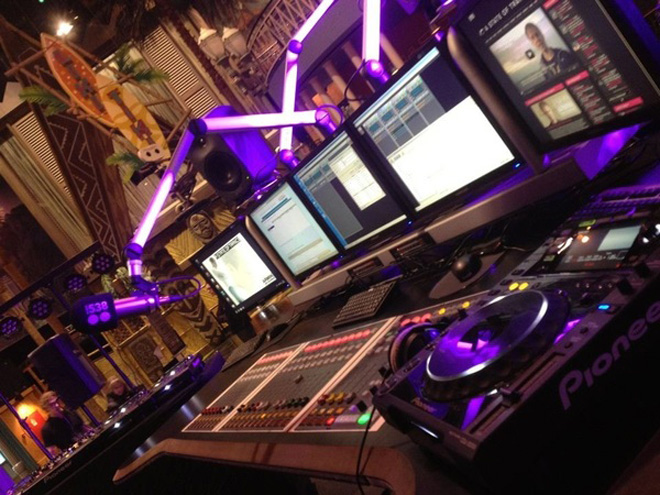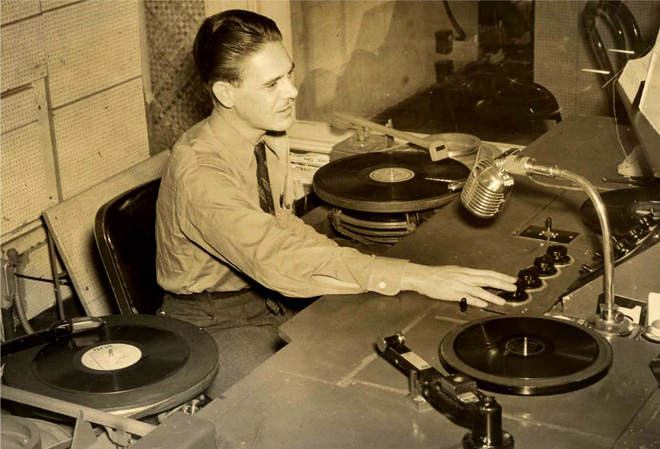Digital music’s takeover resulted in the record store’s demise – a downside on the hand for DJs, as it takes away the experience for finding a new record, but puts thousands of new tracks at his fingertips. But digital files didn’t just obliterate this once-keystone aspect of listening to music – it also made a big dent in radio.
That’s not to say that radio hasn’t entirely died. Genre-specific stations have disappeared or diminished in quality, making way for more top 40, easy listening, and talk. However, as rock and hip-hop’s domination lessens and country occupies an obstinate niche, the following question has arisen: Why isn’t there much dance music on the radio?
The fact is, dance music has widely been absent from U.S. radio stations, even during the height of electronica in the ‘90s. A tune or two – now like Avicii’s “Wake Me Up” or Zedd’s “Clarity” – makes it onto the top 40 by virtue of Billboard chart ranks, but with the internet, and specifically social media, being dance music’s modern domain, setting sight on terrestrial radio just looks to be a bit superfluous.
But don’t tell that to SFX Entertainment and Clear Channel. A January 6 press release announced a marketing and content partnership between the two media conglomerates. Together, the two companies expect to hold a DJ/producer contest, broadcast a weekly Beatport countdown, and schedule a live music event in 2014. The former two will air on Clear Channel stations and iHeartRadio channel Evolution, which is also broadcast terrestrially.
Regarding the partnership, a Clear Channel executive said in a statement, “This strategic partnership with SFX will give our audiences access to a deeper selection of music content and live events.”
If it were still 1996, and a genre-specific station could sustain itself, this partnership might seem innovative, but in 2013, there are a few significant reasons dance music doesn’t fit on a terrestrial station.

1. Ever Hear of This Thing Called The Internet?
Have you? EDM’s huge on it, from what I hear.
The fact is, even the most casual EDM fans want some diversity, and hearing Zedd’s and Avicii’s blandest songs once an hour just doesn’t cut it.
But while iHeartRadio and Sirius XM do the diverse mainstream thing well when it comes to electronic music, listeners have more options than tuning a knob between two stations that play top hits. Streaming services, from Pandora and Spotify to even Soundcloud, eliminate terrestrial radio’s banality.
As Yosh at MagneticMag.com details, simply selecting a specific genre or group of artists opens up a Pandora’s box (pun partially intended) of sounds you might not be familiar with. When you’re seeking out new music, from mainstream artists a listener is less-familiar with to underground electronic music, the internet’s a black hole a listener gets sucked into – and quite frankly, once you’re in, you really can’t go back to terrestrial radio.
2. Global? Local? It’s All the Same
No, literally, it is when you listen to the limited dance music offerings on terrestrial radio.
That’s mainly because, even though areas have their own diverse local scenes, local dance music stations broadcast content that’s available globally.
Evolution is a perfect case in point. Essentially iHeartRadio’s answer to Sirius XM’s BPM and Electric Area channels, Evolution began to be broadcast terrestrially in Boston first at the end of 2012. Then, targeting another market more preferential to EDM, Clear Channel broadcast the same station in Miami by March 2013.
Although Evolution appears to be moderately successful on terrestrial stations, even replacing long-time alternative rock channel WFXN in Boston, nothing about it screams “original.” In Boston, you won’t hear a local DJ or producer spinning his latest creation or set; instead, listeners get the same Pete Tong, Wolfgang Gartner, Ultra Radio, Diplo, and Dim Mak programs broadcast in Miami and globally through iHeartRadio. Rather than a portal to discovering what’s so unique about Boston’s or Miami’s electronic music scenes, it’s just an alternative to what’s online – and, in early twentysomething lingo, a way for “the olds” to discover EDM on their drive to work without having to purchase Sirius XM.
3. Can’t Fit Into the Formula
For every instance dance music might be able to fit on the radio, like the rumor about Daft Punk premiering part of Random Access Memories before the official release, there are instances about artists getting screwed over. As Digital Music News pointed out in a study for the latter, half of all electronic dance music artists on the radio don’t even receive royalties.
But while dance music might be able to coexist with other genres on terrestrial radio over in Europe (see the recent Capital Extra station in the U.K. that lukewarmly blends dance with pop, R&B, and dance hall), it has always been a novelty in the U.S. As SmileRadio.net pointed out, electronic music on the radio in the ‘90s can be boiled down to a handful of hits: prominent electronica artists like Fatboy Slim, Daft Punk, and The Prodigy, and “safe” Eurodance like Aqua and Haddaway.

When you take into consideration that Daft Punk still made it on top 40 radio last summer for “Get Lucky” and Avicii’s “Wake Me Up” is kind of a better, easier-to-listen-to version of Eurodance trash like Rednex’s “Cotton Eye Joe,” things just really haven’t changed that much.
With the rest of listeners migrating over to internet radio and streaming services, AM/FM radio remains a relic like CDs. But when many EDM releases come out in just digital formats these days, why should radio be regressive? Stations like Evolution remain an introductory portal, but anyone seeking out dance music beyond the Billboard charts already knows where to go.




